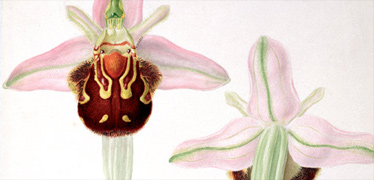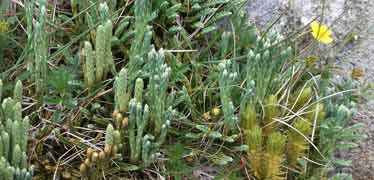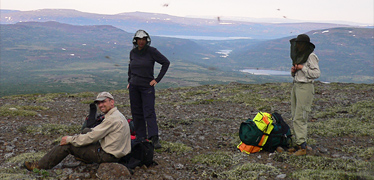
Illustration of Cypripedium calceolus, lady’s slipper orchid
Principal Investigator
Project summary
- Focus: Phenological studies of UK plants and environmental change through time
- Funding: Internal
- Start date: 2013
- End date: 2016
We are extracting flowering time data from our collection of 610,000 British and Irish plant specimens to study the phenology of selected orchid species.
When compared with recent observational data collected by amateur natural historians, these data will provide a unique record of environmental conditions through time.
Further phenological studies will focus on key widespread grassland plants in the UK, investigating:
- relationships to the life cycles of selected UK Lepidoptera and Hymenoptera
- shifts in morphology and pollinator interactions
Methods
We and our partners are:
- documenting shifts in flowering times (phenology)
- measuring variation in plant morphology through time
- documenting responses to shifts in CO2 concentrations
Curatorial work undertaken prior to extraction of the specimen collection event data includes:
- locating backlog material for each selected taxon
- preparing and mounting this material and undertaking conservation work on specimens already in the main collection
- checking identifications of specimens and updating nomenclature where necessary
- checking locality information and resolving this to at least British Isles vice-county scale
- providing a unique identifier (barcode) for each collection event
Digitisation
The Museum digitisation team have imaged and databased the specimens. After extraction of the collection event data, a team of volunteers collect additional morphometric and pollinator data for analysis by a quantitative ecologist/statistician.
Related project
Museum biologist and botanist Kath Castillo and artist Chrystel Lebas are working on a project to observe environmental change in the UK. They are using the Sir Edward James Salisbury Archive to compare images of the Scottish landscape from the early 1900s to the same landscapes today.
Read their blog posts to find out more about the project and their research trips to Scotland.
· post 1: Observing environmental change
· post 2: Edward James Salisbury: Prophet and propagandist of botany
Watch a video about the collaboration.
Collaborators
- Prof Tim Sparks (Collaborator, University of Coventry)
Get involved
We welcome enquiries about potential collections-based research collaboration. Topics of particular interest include:
- UK plant phenology
- non-native species biology
- UK plant-invertebrate interactions
- use of herbarium specimens as environmental proxies
Origins, evolution and futures
This project is part of the biotic response to environmental change project within the Museum's origins, evolution and futures initiative.

Origins, evolution and futures
We study the Earth's origins, environment and the evolution of life

Fossil plants research
Using our palaeobotany collections to unravel the origins and evolution of plants

The British and Irish herbarium collections
Nearly every known British and Irish taxon is represented


